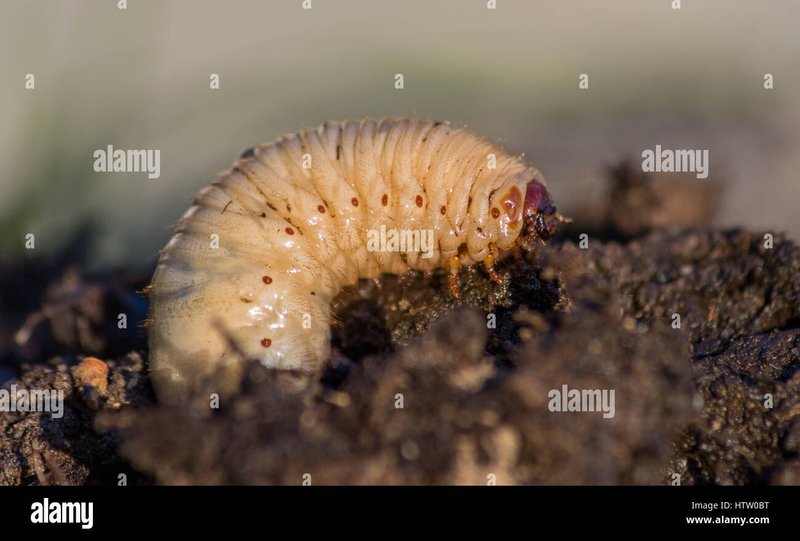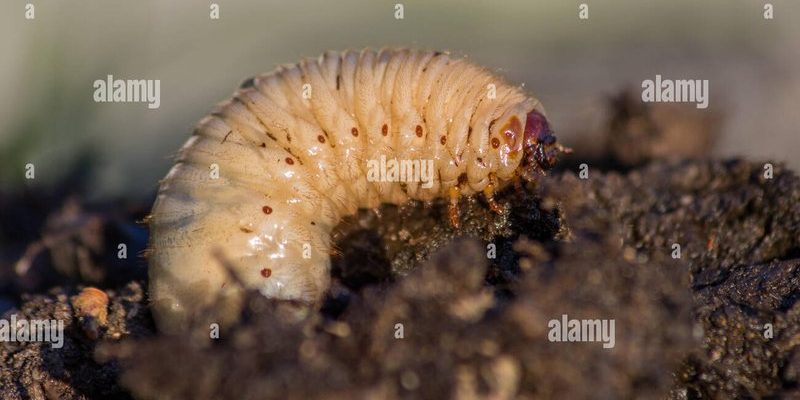
Think of grub worms like the night owls of the insect world. They come out to play mainly at night, but they have some daytime habits too. Knowing when they’re most active helps you plan your gardening or lawn care better. Whether you’re trying to keep the grass green or just curious about these crawling critters, exploring their activity helps you grasp how to manage them wisely.
Let’s dive into the nitty-gritty of grub worms’ daily routines, their favorite times for feasting, and how you can deal with them effectively.
Understanding Grub Worms
Before we get into when grub worms are active, it’s important to know what we’re actually dealing with. Grub worms are the larvae of various beetles, most commonly the Japanese beetle, June beetle, or masked chafer. They have soft, white bodies with a darker head and a characteristic C-shape when they’re resting. These worms thrive in moist environments, making your lawn and garden a perfect home.
These little guys spend a significant part of their lives underground, munching on the roots of grass and plants. When they reach maturity, they’ll crawl to the surface, transform into beetles, and start the life cycle all over again. This means that if you see them, there’s a good chance they’re getting ready to reproduce and create more little nuisances in your yard.
Understanding that grubs are in their larval stage is key. Their behavior changes as they grow, so knowing where they are in their life cycle will help you target them better when you’re trying to control their population.
Peak Activity Times of Grub Worms
So, when exactly are grubs most active? Generally, grub worms are primarily nocturnal. This means they tend to be most active during the late evening and nighttime hours. However, they can also be seen peeking out during cooler, cloudy days. Here’s a breakdown of their habits:
- Evenings and Nights: Grub worms often come out to feed once the sun goes down, seeking out tender grass roots under the cover of darkness.
- Cool, Cloudy Days: If it’s a cooler day with overcast skies, you might spot them closer to the surface during the daytime.
- Warm Soil: They thrive in warmer soils, so during the late spring and early summer months, when temperatures rise, they’ll be more active.
If you’ve noticed patches of brown grass or wilted plants, it’s wise to investigate during these active hours. This way, you can catch them in the act and assess the damage they’re doing.
Seasonal Activity and Lifecycle Stages
The activity of grub worms can also vary by season. In most regions, grubs are more active during the warm months of late spring through summer. This is primarily due to their life cycle stages. Let’s break it down:
- Spring: As temperatures warm up, grub worms emerge from dormancy and start feeding again. This is when you might notice them doing the most damage.
- Summer: They remain active, feeding heavily as they grow, preparing to pupate into beetles.
- Fall: As temperatures drop, they start to burrow deeper into the soil to survive the colder months.
- Winter: Grubs enter a dormant stage, hiding away from the cold until spring returns.
Knowing these seasonal changes can help you pinpoint when to check for grub activity. Usually, their damage peaks in the summer months just before they turn into adult beetles.
Detecting Grub Damage
You might be wondering how to tell if grub worms are causing problems in your garden. Some signs are pretty clear. Here’s what to look out for:
- Browning Patches: If your lawn has patches of dead or brown grass, especially if it’s soft and easy to pull up, it’s a sign that grubs might be munching on the roots.
- Increased Animal Activity: Animals like birds, raccoons, or skunks will dig into the soil to snack on grubs. If you see them around your yard, that’s a red flag.
- Wilting Plants: If your plants are wilting even after watering, check the root zone for grubs.
By keeping an eye on these signs, you can catch grub infestations early and take the appropriate measures to manage them.
Effective Management Strategies
If you find that grubs are wreaking havoc in your garden or yard, don’t panic! There are several strategies you can use to manage their population:
- Beneficial Nematodes: These microscopic worms attack grubs and can be a natural solution to reduce their numbers.
- Pesticides: Targeted insecticides can help, but it’s essential to choose ones that don’t harm beneficial insects. Apply them during peak activity times, like evenings.
- Healthy Lawn Practices: Keeping your lawn healthy through watering, aeration, and proper mowing can help it withstand grub damage.
By implementing these strategies, you can maintain a vibrant and healthy yard while controlling grub populations effectively.
Preventive Measures for Your Garden
Preventing grub worms before they become an issue is the best approach. Here are some tips:
- Regular Monitoring: Keep an eye on your lawn’s health and check for signs of grubs, especially during the summer months.
- Proper Lawn Care: Healthy, well-maintained grass is less likely to be damaged by pests. Fertilize appropriately and water deep but infrequently.
- Companion Planting: Some plants naturally deter beetles, which prevents grubs from even appearing. Consider incorporating these into your garden.
By staying proactive, you can minimize the impact of grub worms on your beautiful yard.
When to Call in a Professional
In some cases, you might find that your efforts to control grub worms aren’t enough. If you notice severe damage, or if the infestation is extensive, you may want to consider calling in a professional. They can provide targeted treatments and help restore your lawn to its previous glory.
Understanding the right timing for action can save you a lot of trouble down the road. Professionals can assess the situation better and recommend the most effective solutions tailored to your specific yard.
In conclusion, understanding what time of day grub worms are most active, alongside their life cycle, is crucial for effective lawn and garden management. By knowing their habits, implementing preventive measures, and being proactive, you can keep your yard healthy and attractive. Whether it’s a late-night check or a well-timed treatment, being aware of these little critters can set you on the path to a flourishing garden. Happy gardening!

